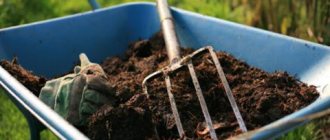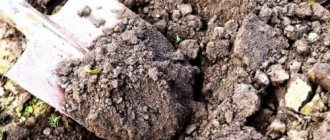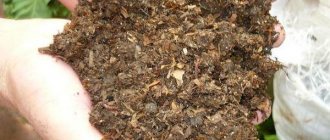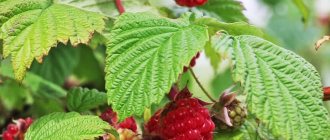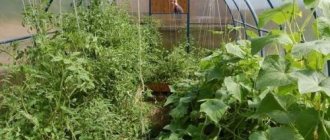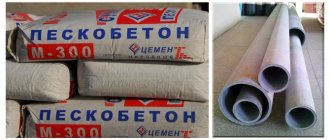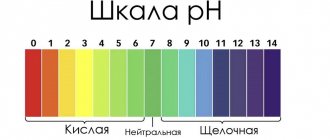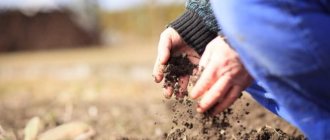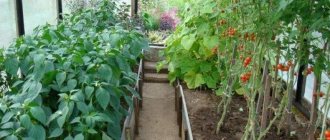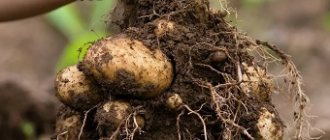In the middle of summer, when everything is in color and fragrant, many gardeners think about how and with what they should fertilize their garden to obtain the next harvest.
This is a very important question, which, however, is not a problem for experienced farmers. Only beginning gardeners, who often do not even have theoretical training, should think about this. After all, it is already clear that good soil fertilization is necessary for the future harvest. To get a good, high-quality harvest, you need to know well what additives are best added to the soil and when to do it.
It is absolutely clear to every farmer that fertilizing the land is necessary, since without it it loses its fertile properties. But there are two options for when to recharge the soil. If fertilizer is applied in the spring, it will help the rapid growth of plants with good harvest characteristics, while all fertilizers “work” only on the plants. This system is most often practiced in large agricultural enterprises focused on quick profits. For a private farmer who cares not only about profit, but also about his land, this option is not suitable; he will think about fertilizing the land only after harvesting. When fertilizing is applied in the fall, the soil itself is saturated and replenished with necessary microelements after the summer season. Autumn fertilizer is usually applied after September 15 and before the second half of October. Then the fertilizer is dug up along with the soil, and over the winter the soil is replenished with various useful microelements that were “sucked” out of it over the summer by the last harvest.
Many farmers do not limit themselves to growing annual crops; many plants are perennial and tolerate wintering quite well, especially if they are helped in this. Crops that remain in the ground for the winter must be fed with phosphorus fertilizers; potassium fertilizers can also be used. These additives strengthen the root system of plants, as well as their immunity, which is necessary for a comfortable wintering of these crops. When applying fertilizer in the fall, during the process of rotting, the soil will be filled with very rich microelements, and when fertilizing in the spring, all useful elements only contribute to plant growth, and nothing remains in the soil for the winter. This is one of the differences between soil fertilization in spring and autumn, so a novice farmer must accurately determine which type of soil fertilization is best for him to use.
Responsible step
Fertilizing in the spring is an extremely important agrotechnical procedure that provides a reliable foundation for the development of a luxurious flowering garden and vegetable garden, and guarantees the receipt of ripe, healthy fruits.
A deficiency of nutrient minerals in the soil causes many problems: plants weaken, often get sick and are unable to cope with difficult weather conditions. But it is also important to remember that an excess of minerals hides an even greater danger, both for botanical crops and for humans and the environment as a whole.
It is important to strictly follow the dosage of drugs and fertilizer application schedules, and in this matter, ready-made mineral complexes always win. It is impossible to calculate the exact amount of substances introduced with livestock products, because each farmer farms differently, and as a result, the component composition of the manure will be different. Ready-made fertilizers, which are offered by domestic and foreign industry, have a clearly regulated set of components in strict proportions, which will allow you to avoid mistakes with the dosage. So don’t be upset about the lack of organic matter, but let’s take a closer look at how you can fertilize the soil besides manure.
The role of spring feeding
In horticulture, floriculture and vegetable growing, fertilizers are used in the spring for different purposes, depending on the object:
- for seedlings and seedlings - stimulation of the development of the root system;
- for flowering plants and shrubs - to ensure better decorativeness of flowers;
- for fruit trees - to get more fruit buds, increase the yield and marketable properties of the fruit;
- on strawberries and bush berry fields - to increase yield and improve the taste of berries;
- for garden crops - increasing fruit yield, improving their keeping quality.
For all plants, spring fertilization helps increase resistance to pathogenic bacteria and adverse environmental conditions.
Fertilizers can ruin all plantings if you don’t know how to handle them.
Options to choose from
Top dressings popular in gardening can be divided into three large groups:
- Natural organic preparations of natural origin - in addition to manure, these also include: compost, peat, wood ash, green manure and even banal green manure.
- Mineral complexes are one-, two- and multi-component compositions containing various macro- and microelements: phosphorus, potassium, nitrogen, as well as molybdenum, zinc, copper, iron, calcium, etc.
- Combined products that include both organic and mineral preparations, as well as a number of vitamin complexes, humates and humins, and other useful components.
Organic Substitutions
A clear advantage of using these substances is the ability to grow an absolutely healthy and environmentally friendly crop. When it comes to the question of how to fertilize the soil in the spring if there is no manure, the best substitutes are the following.
Compost is the most inexpensive and easiest way to replace mullein, but it is quite labor-intensive and time-consuming. The basis of the compost pit is layers of organic plant residues (tops, garden herbs, foliage, sawdust, peat bog), processed under the influence of beneficial microorganisms for 9-12 months. Periodic mixing of the contents of the pit (3-5 times per season), as well as the use of special catalysts such as “Compostin”, etc., will help speed up the maturation of compost. Ready-made compost is used during spring plowing, at the rate of 0.5-1 bucket per square plot.
Vermicompost is a product of the processing of organic residues by Californian earthworms. The process goes twice as fast as in a compost pit, while only 1 kg of the finished substance easily replaces up to 10 kg of manure.
Peat - this substrate itself contains practically no useful components, but adding it to the soil mixture in the garden and garden changes the structure of the earth, increases the breathability of the soil and improves the ability to absorb moisture. Peat will be an ideal component for crops that prefer slightly acidic soils: many fruit and berry plants, tomatoes, etc. Peat is also an integral part of the compost heap.
Sapropel (river silt) - is formed as a result of the decomposition of algae and inhabitants of fresh water bodies. The substance, rich in organic matter, is well suited for cultivating the garden in the spring, especially on sandy soils and sandy loams, since it has moisture-retaining properties and does not change the environment.
Eggshells are rich in calcium, which is important for the proper development of all plants. It is thoroughly washed, dried and crushed into fine grains, scattered around the tree trunks of fruit trees or poured into shallow trenches along future plantings.
Green fertilizer is an aqueous infusion of herbs (nettle, clover, calendula, potato tops, etc.), which is kept warm for 8-10 days, and then, diluted to a concentration of 1 to 5, used as root dressing and leaf fertilizer.
Wood ash is a good alkalizing component, rich in potassium. It has a dual function, being both a fertilizer and an insecticide. Spray the area in dry form (150-200 g per hundred square meters) or introduce it in dissolved form (the same concentration per bucket of water). Cruciferous crops (all types of cabbage) and berry crops respond well to fertilizing with ash.
Green manure is a natural source of nitrogen. Useful herbs (lupine, peas, clover, alfalfa, etc.) are sown along the row spacing, and before flowering they are mowed and spread as mulch.
What plants love fresh manure? Which plants need manure, and which ones will thank you for the humus?
With the beginning of the summer season, gardeners have to solve the dilemma of what is better, humus or manure and for which plants, and most importantly, when to apply fertilizer.
The issue of using manure and humus has become one of the topics discussed among summer residents. Some are categorically against manure, while others apply it to crops without exception.
Let's figure out which of them is right and when to use humus and when to use manure.
What is the significant difference between humus and manure?
Humus is the result of rotting manure. Good - similar to earth, loose and crumbly. They are also careful when purchasing manure; horse manure is used for shrubs and fruit-bearing trees, cow manure is used to create insulated ridges, and the most universal is sheep manure, although it is much less common. It is undesirable to purchase and use rabbit manure in various ways in the garden. Manure should be with oats, less preferably with sawdust.
Unlike humus, manure is undecomposed animal waste, the introduction of which in its pure form is undesirable due to the significant amount of ammonia.
It takes about two years for manure to become overheated, and only four years for rabbit manure.
What plants use humus for?
Rotted manure or humus is liked by most plants and has properties such as:
- Excellent soil loosening. It is necessary to introduce humus on clay and sandy soils;
- Significantly increases the fertility of the land; it is needed on poor soils;
- Mulching with humus helps retain soil moisture;
- Humus provides plants with various nutrients.
Humus is added in the spring when digging into all beds, with the exception of those that are planned to be used for planting tomatoes. In the presence of humus, tomatoes begin to grow tops and shoots to the detriment of the fruits.
A significant amount of humus is added to the beds with future plantings of pumpkins, varieties of cucumbers and zucchini, up to 4 buckets per bed; cabbage of any variety also loves fertilizer from nature.
The orchard also needs nutrition. In the spring, around the trees, retreating 1 m from the crown, they dig shallow grooves in a circle and fill them with slightly decomposed manure, enough if it has been left for six months.
Fertile circles are made around fruit bushes with the addition of rotted manure; they require a layer of 15–20 cm to not only provide food, but also to close their exit from the ground for pests that have settled in for the winter.
Mulching with a thick layer of humus for shrubs is an excellent protection against pests. Such work is carried out in currant plantings, with gooseberries and in raspberry fields.
The addition of manure is indispensable when forming warm beds; such layers are alternated with last year's leaves or straw, and a small layer of earth is placed on top.
Cover the soil around the ornamental shrubs with humus.
In flower beds, the soil is first pierced with a pitchfork to ensure access to oxygen after winter, and then humus is added. It is also needed when planting bulbs and for flowerpots with summer flowers.
Which crops need fresh manure?
There are crops in the garden that also like fresh manure. One such plant is roses. In the spring, fresh horse or slightly rotted manure is laid out in the rose garden. This food is to the taste of the queen of flowers, because there is an expression about her: “a rose is a child of dung.” The soil between the rose bushes is also pierced with a pitchfork, and then manure is added. This feeding is carried out until the end of June.
The addition of manure is indispensable when forming warm beds; such layers are alternated with last year's leaves or straw, and a small layer of earth is placed on top.
It is also acceptable to add manure to raspberry fields; this is one of those crops that cannot be overfed; horse manure is added to raspberries.
! Without regard to anything, fresh manure is applied in late autumn. This is done when the ground is slightly crusted over from frost, then the roots will not be able to absorb fresh elements and the plants will not begin to grow. By spring, such manure will turn into rotted manure and will become an excellent supplement.
In the fall, fresh manure is spread on top of the beds; by spring it will decompose and all that remains is to dig up the soil, and the melt water will carry food deep into the earth.
Manure is placed under trees and shrubs, between peonies and in flower beds.
It is better not to store the remaining manure in bags, but to shake them out and put them in a corner of the area like compost to rot.
By the way, layers of compost are also formed using manure.
Mineral fertilizers for the garden in spring
It is easier to use ready-made drugs, because to calculate the correct dosage, you just need to follow the instructions on the package exactly. Before spring digging, you can apply any chemicals even in dry form, simply scattering granules (powder) over the field, followed by embedding the substances deeper.
The main active component for plants in the spring is nitrogen, as well as the potassium-phosphorus complex, therefore, in the question of how to fertilize the soil, in addition to manure, it is appropriate to add multicomponent fertilizers like “Nitroammofoska” or “Nitrophoska”, as well as one- and two-component mixtures: “Potassium Monophosphate” , “Diammofoska”, “Superphosphate” simple or double, “Precitate”, “Kalimagnesia”, potassium nitrate, as well as “Urea” (urea), ammonium nitrate, etc.
Special mixtures for specific crops are extremely popular: “Berry”, “For Tomatoes”, “Cabbage”, etc.
It is better not to use chlorine-containing preparations (potassium chloride, etc.) in the spring, since this element is not beneficial and contributes to a change in the flavor and aromatic complex of berries, melons, and potatoes.
Nitrogen will allow plants to actively gain green mass, because in case of deficiency of this element, any botanical crop stops growing, the foliage loses its green color, turns pale and shrivels.
Potassium will help crops strengthen their immunity, develop solid disease resistance, and survive droughts and frosts. In addition, the element improves the commercial properties of the crop, increases the sugar content of fruits and berries, and enhances the natural aroma.
Phosphorus plays a leading role in the formation of the root system, and is also important for the development of a powerful above-ground part of plants.
Mineral fertilizers are applied to the soil in advance, before digging or immediately at the time of planting seedlings or sowing seeds. The concentrations of the drugs differ, since spring plowing takes place 1-1.5 months before planting. As soon as the snow melts and the average daily air temperature is set at +5 °C, you can apply the following to each square of the site:
- 50-75 g phosphorus,
- 45-60 g potassium,
- 25-40 g of nitrogen.
To ensure 100% absorption of minerals, it is recommended to add substances in a special chelate form.
It is convenient to apply any other microelements in the form of foliar sprays on the leaf, for which the powder of boric acid (1-2 g per liter of water) or manganese (0.1-0.5 g) is dissolved and irrigated on each bush. Copper or iron sulfate is also used. At the same time, a dual approach is ensured: feeding and disease prevention.
Horse manure - pros and cons
Horse manure is one of the most useful organic fertilizers, which can be applied to garden beds and flower beds with equal success. However, not all summer residents know exactly what benefits horse manure can bring to their summer cottage, but there really are a lot of benefits from it! So why can this simple and completely free fertilizer be useful to a modern summer resident?
advantages
horse waste includes an impressive amount of organic matter and is a fairly effective concentrate of phosphates, nitrogen compounds and such useful minerals as calcium and potassium. and thanks to such a rich composition, horse manure can not only significantly increase the nutritional value and fertility of the soil, but also activate the growth of a wide variety of crops! with the help of this substance it will not be difficult to significantly increase the yield of various garden and vegetable crops. In addition, horse manure helps make plants much more resilient, both in relation to environmental conditions and in relation to various infections and pests. and if you mix horse manure with sawdust, it will bring even more benefits!
Horse manure is lighter than cow manure; accordingly, it decomposes and rots much faster. And, what’s especially nice, it is absolutely not susceptible to infection by all kinds of pathogenic microorganisms! This horse waste product is also endowed with the ability to retain heat for as long as six to eight weeks, cooling very slowly and gradually. Horse humus also perfectly loosens soils, saturates them with carbon dioxide, is a valuable supplier of a wide variety of nutritional compounds, ensures proper circulation of air and water, and actively counteracts soil acidification.
flaws
Horse manure also has certain disadvantages: firstly, it is not available to every summer resident, secondly, horse manure has a too pungent and very unpleasant odor, and thirdly, many do not like the need to accurately dose and dilute this fertilizer. opponents of using horse manure believe that it would be much more convenient to purchase high-quality mineral fertilizers in the store and periodically pamper growing crops with them.
What type of manure is best?
Horse manure can come in a variety of forms: it can be fresh, semi-rotted or rotted, and also in the form of humus, liquid solution or granules. At the same time, fresh horse manure is considered the best and healthiest option. However, at the same time, it is important to take into account that such manure is endowed with the ability to heat up quite strongly, which in turn can easily destroy vegetation; accordingly, it is necessary to use fresh horse manure with some caution. It is best to resort to its help in the fall, when the garden beds have already been dug up - during the winter, all the substances contained in such manure will have time to completely decompose, and in this case there will be no need to talk about any harm to the plants at all. Moreover, with the onset of spring, plants will be able to receive all the elements necessary for their full growth in an easily accessible form! And in the spring, fresh horse manure is often used as biofuel in greenhouses - it warms up beds with zucchini and early cucumbers especially well! It is quite acceptable to “mix” horse manure with a wide variety of other organic waste. With peat, it generally creates an ideal tandem! Horse manure has proven itself no worse when combined with well-chopped straw; in addition, it goes well with fallen leaves, sawdust or grass. And many summer residents are very willing to dilute fresh horse manure with water, obtaining a useful and effective liquid fertilizer!
Combination drugs
In terms of how to fertilize the land other than manure, multicomponent organomineral fertilizers have proven themselves well.
“Agrovit Kor” is a humus-forming fertilizer containing organic matter (peat, brown coal, amino acids) and minerals (balanced set), which promotes accelerated growth and strengthens plant immunity, as well as improving soil structure. There are universal and specific series.
"Bona Forte" - fertilizers contain chelated forms of minerals, which are most easily absorbed by any botanical crops. The composition also contains vitamins and other vital substances.
"Fertika" - multi-component mixtures for the full development of plants of any species and varieties, which help increase productivity, ensure environmental safety and improve product quality.
It is always possible to replace manure, but it will hardly be possible to do without additional nutritional supplements. Each presented preparation differs in composition and ensures the effectiveness of plant development to a greater or lesser extent. It is important to strictly follow the breeding instructions and then you will be able to grow a truly luxurious garden and vegetable garden.
How to properly fertilize the soil
Autumn fertilization of the soil, as can be seen from the above, enriches the soil very well for the next year. After you have harvested the crop, you need to evenly spread (scatter) the additives over the area that you want to enrich with useful substances. After this, you need to dig up the fertilizer along with the soil so that it affects as thick a layer of fertile soil as possible.
There are many types, types and varieties of soil fertilizers. In this article we will look at organic fertilizers, which are the most accessible and, by their origin, have the most natural, so to speak, qualities. All these fertilizers are easy to obtain during farming; in essence, they are agricultural waste containing a lot of microelements necessary for cultivated plants.
